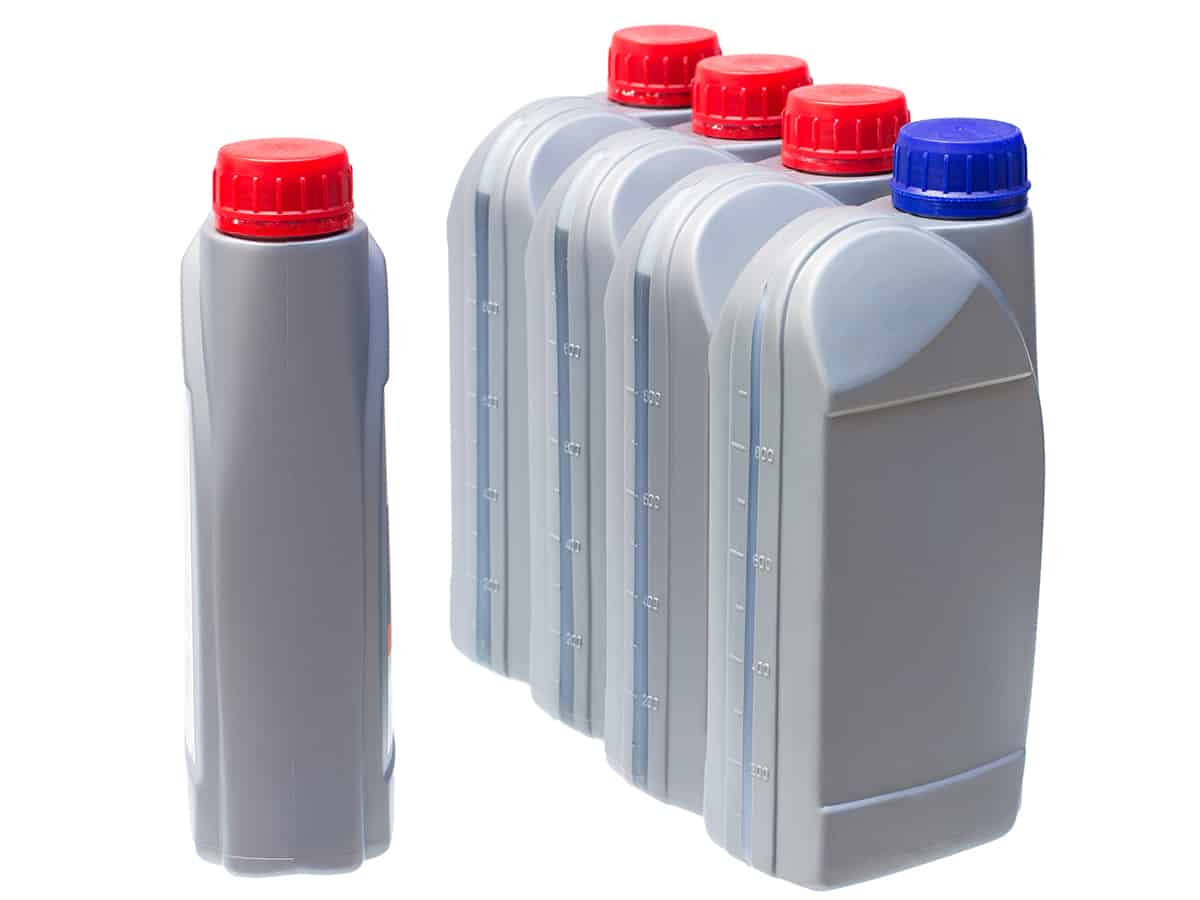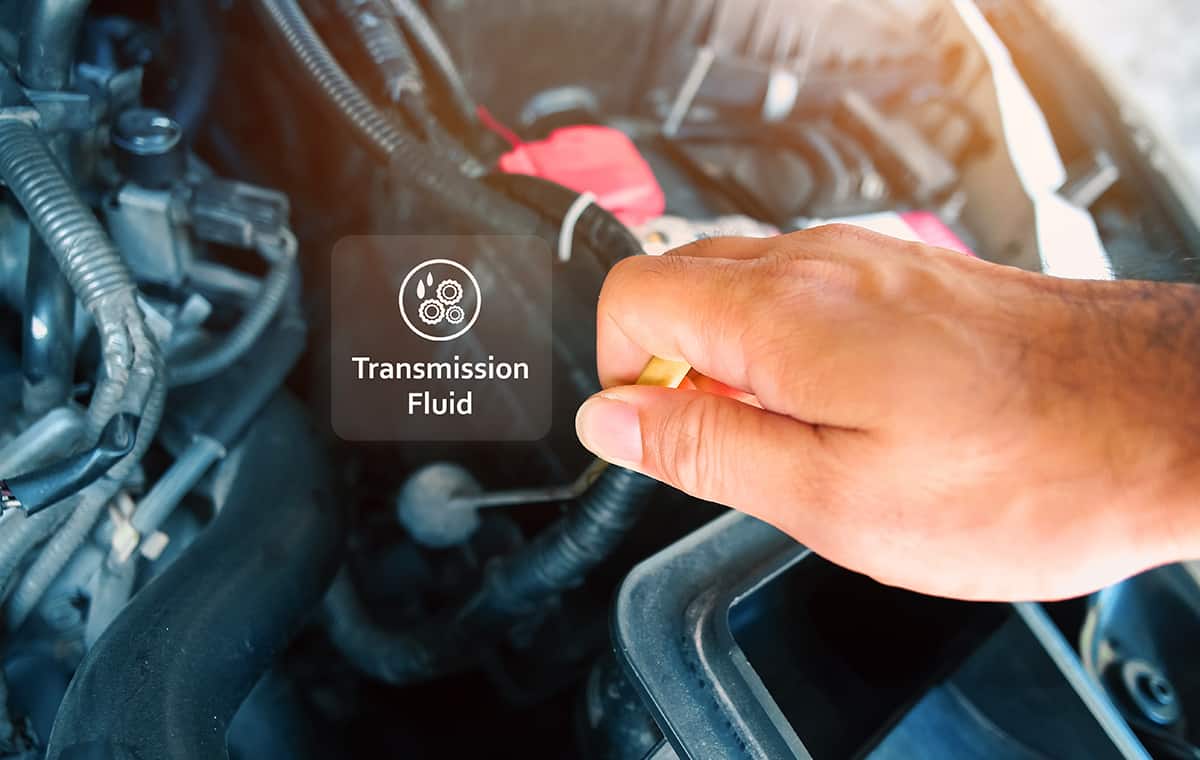Have you ever wondered what keeps your car running smoothly? Your car requires a transmission fluid that lubricates parts of the car’s transmission, ensuring everything works seamlessly. A well-maintained transmission can make a huge difference in your car’s performance and longevity.
The ideal time to change transmission fluid is typically every 30,000 to 60,000 miles or every 2 to 4 years. But always check your car’s manual for the manufacturer’s recommendation.
In this article, we’ll explore everything about transmission fluid—its role, the signs you should look out for when it needs changing, and how to change it yourself.
Basics of Transmission Fluid

When you think about a car’s operation, it’s a complex network of parts and components all working together. One vital component in this system is transmission fluid.
The transmission fluid in your car serves multiple functions to ensure your vehicle runs optimally.
Functions of transmission fluid
Here are the key roles it plays:
- Lubrication: The transmission fluid provides essential lubrication to the moving parts within your transmission system. This reduces friction and prevents these components from wearing out too quickly.
- Cooling: Your transmission generates a lot of heat as it operates. The transmission fluid helps to absorb and dissipate this heat, preventing your transmission from overheating.
- Power transmission: In an automatic transmission, the fluid acts as a hydraulic fluid, helping to transmit power from the engine to the transmission.
- Preventing contamination: The fluid also helps to keep the transmission clean. It carries away dirt and metal particles, preventing them from building up and causing damage.
Types of Transmission Fluid
If your vehicle has a manual transmission, it uses manual transmission fluid, often known as “gear oil.” This fluid is thicker than its automatic counterpart and has a distinctly different composition. It’s designed to lubricate the gears and bearings inside the transmission, helping them work together without generating too much heat.
Vehicles with automatic transmissions, on the other hand, use automatic transmission fluid. This fluid is thinner and serves not only as a lubricant but also as a hydraulic fluid, enabling the car’s shifting mechanisms to work properly.
When to Change Your Transmission Fluid
Knowing when to change your transmission fluid is crucial for the health and performance of your vehicle. It can keep your car running smoothly and save you from expensive repair bills down the line.
Mileage guidelines
If you frequently drive in heavy traffic, tow heavy loads, or drive in extreme temperatures, you might need to change your fluid more often. This is because these conditions can generate more heat in your transmission, causing the fluid to degrade faster.
As a rule of thumb, you should change transmission fluid anywhere from 30,000 miles to 100,000 miles, depending on the make and model of your vehicle and whether it has a manual or automatic transmission.
Time guidelines
Even if your car hasn’t reached the recommended mileage for a fluid change, time can still affect the quality of your transmission fluid. If you don’t drive your car frequently, the fluid deteriorates with time. It’s recommended to change the fluid every 2 to 4 years, even if the recommended mileage hasn’t been reached.
Manufacturer’s recommendations
This manual contains advice from the people who know your vehicle best—the manufacturer. Each car is different, and what works for one vehicle may not work for another.
Signs That Your Transmission Fluid Needs Changing

Your car will give you clear signs that your transmission fluid needs to be changed. Ignoring these symptoms could lead to more severe problems, so it’s essential to recognize them and take appropriate action.
1. Color and consistency
New transmission fluid is typically clear, with a red or green color. If your fluid is dark or has particles floating in it, it’s time for a change. You can check the color of your transmission fluid by removing the dipstick, wiping it clean, reinserting it, and then pulling it out again to inspect the fluid.
The consistency of the fluid is also important. If it feels gritty, it means that there’s too much dirt, which could damage your transmission.
2. Slipping gears and delayed engagement
Another sign that your transmission fluid needs changing is if your car starts showing performance issues. This could include gears slipping, which means your vehicle unexpectedly pops into neutral.
Delayed engagement is another symptom. This happens when there’s a delay before the car starts moving after you’ve shifted into drive or reverse.
3. Unusual noises and smells
If you hear grinding or squealing noises while changing gears, it could mean that your transmission fluid is dirty or low. Furthermore, a burnt smell can indicate overheated transmission fluid.
DIY Steps to Change Your Transmission Fluid at Home

With the right tools and some safety precautions, you can change your car’s transmission fluid at home.
Step 1. Gather your tools and supplies—Before you start, make sure you have all the necessary tools and supplies. You’ll need:
- New suitable transmission fluid
- A transmission fluid filter
- A drain pan to catch the old fluid
- Wrenches and sockets
- Safety equipment (gloves and safety glasses)
Step 2. Warm up your car—This makes the fluid thinner and easier to drain. Run your car for a few minutes, then turn it off before you start the process.
Step 3. Locate the transmission fluid pan— This is where the fluid is stored. It’s usually located towards the middle of your car.
Step 4. Drain the fluid—Place the drain pan under the transmission fluid pan. Then, carefully remove the drain plug with your wrench, allowing the fluid to flow out into the drain pan. Be careful during this step, as the fluid can be hot.
Step 5. Replace the filter—Remove the old filter and replace it with the new one. This helps to ensure your transmission runs smoothly.
Step 6. Reinstall the pan and add new fluid—After replacing the filter, reinstall the pan and tighten the drain plug securely. Now you’re ready to add the new fluid. Locate the transmission fluid dipstick under your hood, remove it, and use a funnel to add the new fluid.
Step 7. Check the Fluid Level—Start your vehicle and let it run for a few minutes. Then, while the engine is running, check the fluid level by inserting the dipstick, removing it, and observing the fluid level. If it’s in the “full” range, you’re good to go.







